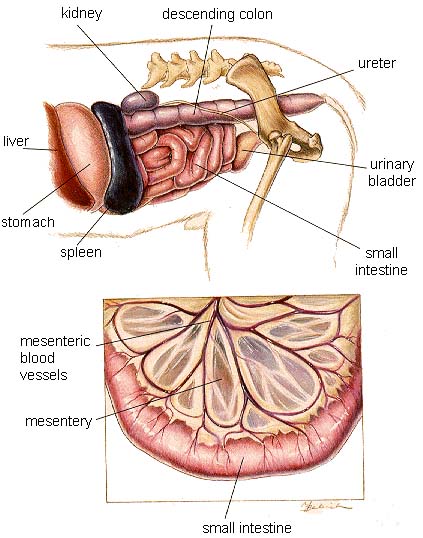Table of Contents
Summary:
"Dog bladder infections usually occur when bacteria enter the body through the same opening used by the dog to urinate. When the body is not working properly, such as decreased levels of urination, or a depressed immune system, bacteria can take hold and colonize in the urinary tract. Canine bladder infections can be treated with antibiotics. Other longer term approaches geared toward prevention of future problems include homeopathic remedies, a switch to canned food for greater moisture content, and adding an additional walk to the schedule to encourage urination."
Overview
Dog bladder infections are common in dogs. They are more common in females than in males, because they have a wider and shorter urethra (the tube that carries urine from the bladder out of the body), making it easier for bacteria to reach the bladder.
There are several types of bacteria that can cause the infection including ecoli (38%), staphylococcus (14.5%) and proteus mirabilis (12.4%).
If left untreated, serious complications such as kidney infections and even kidney damage can result. However, bladder infections are easily diagnosed and treated, so complications should be rare.

Dog Bladder Infection Symptoms
Symptoms include the need to urinate more frequently than usual, urinating in unusual places (such as indoors), straining when urinating, blood in the urine, bad-smelling urine, a tender lower abdomen (the area of the bladder), and fatigue. You may not notice all of these signs, but several of them will be present.
If your dog is housebroken and suddenly begins urinating in the house, you should suspect a bladder infection and schedule a visit to your vet. There can be many other causes, but a bladder infection is at the top of the list.
Bladder Infection Diagnosis
Your vet will want a urine sample to check for the presence of bacteria. If you can, collect a urine sample at home to take to your vet. Your vet will insert a catheter (a thin tube) through the urethra and into the bladder to collect a urine sample.
The urine will then be cultured (tested) for the presence of bacteria. Your vet may be able to do this at his or her office, or may have to send it out to a lab. If bacteria is present, that means your dog has a bladder infection.
Treatment for Dog Bladder Infections
Bladder infections are treated with oral antibiotics. Usually these are given over a period of fourteen days. Make sure your dog completes the entire regimen of antibiotics even if his symptoms seem to clear up sooner than that. If, after treatment, the symptoms recur, it is usually because there is an issue with your dog's immune system or there were multiple bacteria types causing the illness requiring different antibiotics.
If frequent bladder infections are a problem, you might also consider a Homeopathic (home, non prescription) treatment such as PetAlive UTI-Free Formula for Dog Urinary Tract Infections. Supplements like this are made from a selected combination of herbal ingredients specially formulated to safely and effectively treat the causes and the symptoms of urinary tract and bladder infections in dogs.
Frequent infection could also require prolonged treatment with a low dose antibiotic given for 6 months right before bedtime and after the last urination of the day if the area where the bacteria causing the infection is difficult for the antibiotics to reach.
Your dog should always have access to plenty of fresh water, but this is particularly important during the period of recovery from a bladder infection. Drinking water and urinating frequently will help flush the bacteria from the bladder. Therefore you should arrange to take your dog outside at frequent intervals.
Sources
www.healthypet.com
Your Dog's Bladder Infection
Keith, Christie
Urinary Tract Infection
David Senior
Note: The pictures in this section are reprinted with permission by the copyright owner, Hill's Pet Nutrition, from the Atlas of Veterinary Clinical Anatomy. These illustrations should not be downloaded, printed or copied except for personal, non-commercial use.
